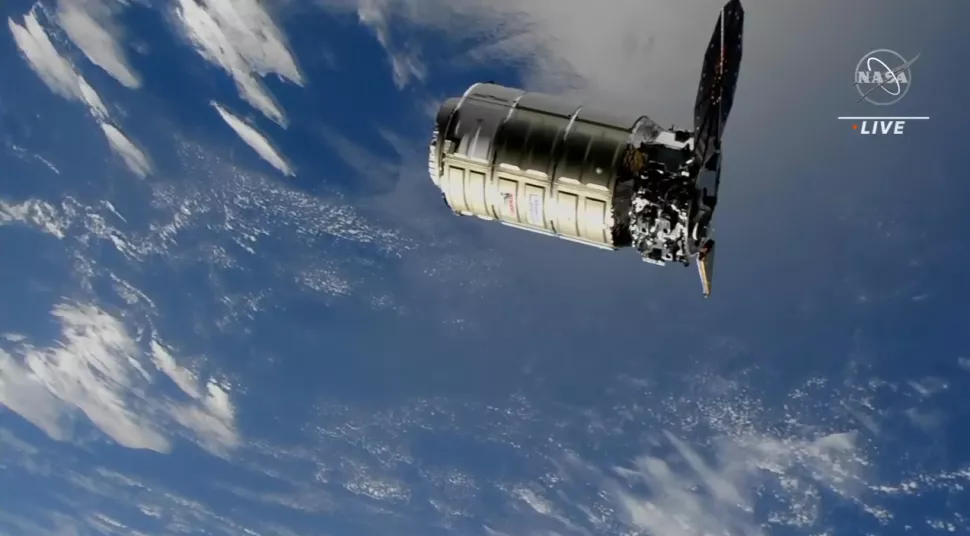The International Space Station received a private Cygnus cargo spacecraft on Wednesday, November 9. Early Wednesday morning, the craft made its way to the station despite one of its solar panels failing to deploy appropriately after the launch.
Astronauts commissioned on the International Space Station (ISS) captured an unmanned Cygnus spacecraft with supplies and scientific experiments at 5:20 AM EST (1020 GMT) as it floated high above the planet’s northern oceans (Indian Ocean).
The Cygnus, which weighs five tons and is sixteen feet long, will dock with the Unity module later today to be brought aboard.
Everyone congratulated the entire NG-18 team for their tireless efforts in getting Sally Ride to the International Space Station. They plucked the spacecraft from low Earth orbit today, radioing to Mission Control after a successful capture.
The cargo ship is called SS Sally Ride and was named after astronaut Sally Ride, who died in 2012. After capturing the spacecraft, Mann quoted Dr. Ride’s thoughts on viewing space from low Earth orbit. “We certainly agree with her–from [low Earth orbit]–the stars no longer look bigger, but they certainly do look brighter,” said Mann.
The Northrop Grumman-built Cygnus robotic freighter launched towards the International Space Station from Virginia carrying a record-breaking 4.1 tons of scientific experiments and supplies for past and future research missions.
However, soon after launch, complications arose due to severe technical problems related to space station operations, and the spacecraft had some difficulties before safely reaching ISS.
Despite the fact that the freighter deployed only one of its two solar panels after liftoff, it managed to get to the ISS safely, most likely due to some extraordinary skill on behalf of the handlers.
Teams kept careful eyes on it as it heads towards the spaceship-like station so they could take extra precautions if something goes wrong.

Northrop Grumman is working very closely with NASA ahead of tomorrow’s planned arrival, capture, and installation of Cygnus at the ISS. Mission teams are also planning a multi-day opportunity to inspect its cargo ship before and after the process.
Northrop Grumman has conducted 18 commercial resupply missions to the International Space Station for NASA. This one, named the Cygnus spacecraft, is carrying 8,200 pounds of scientific investigations and cargo.
Cygnus has also planned in advance about the delivery of the mounting brackets and has sent it along with the other cargo. The astronauts will attach this to the starboard side of the assembly. The mounting bracket will authorize the installation of one of the next pairs of new solar arrays.
The space station ground teams are preparing for an occupied few weeks ahead. There will be the arrival of Northrop Grumman’s Cygnus spacecraft coming on Wednesday, followed by SpaceX’s Dragon cargo ship’s launch and docking by the end of this month.
When the mission is complete, the Cygnus spacecraft will depart from the ISS and head for a detrimental re-entry into Earth’s atmosphere over the Pacific Ocean.












